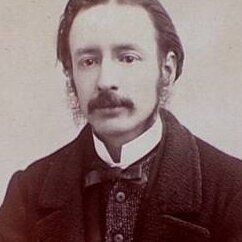Le Roi du Mal (King of Evil)
by Jules Lermina
The sequel of a popular French mystery novel reflecting a remarkable knowledge of Angkor only a few years after Henri Mouhot's 'rediscovery'.

- Format
- on-demand books
- Published
- 1877
- Author
- Jules Lermina
- Pages
- 1
- Language
- French
A colorful set of characters, mostly ruined French aristocrats, bohemian idlers and ladies of the night, are obsessing about finding the mythical “treasure of the Khmers”. Expect a lot of true-to-form jury deliberations, gothic atmosphere galore, hyper-realistic jail scenes, imbroglio mixing adultery amongst the rich and famous, underworld ‘bandit’ misdeeds and even homicides.
In volume I and II of this meandering, noir-decadent story, Exupere, a scientist who would end up tortured by the Wolves, had managed to decipher a Khmer inscription: “TROISIÈME ORIENT… YACKSA COLOSSE… NAGA DOIGT DE PRÉA PUT… DEUX LIS… DOIGT DU ROI… OMBRE CROISÉE, LA EST LE TRÉSOR DES KHMERS A ANGKOR WAT”. [“THIRD ORIENT.. YACKSA GIANT… NAGA FINGER OF PREA PUT… TWO LILIES… FINGER OF THE KING… CROSSED SHADOW, THERE IS THE TREASURE OF THE KHMERS AT ANGKOR WAT”]. On-site, and after sudying a third fragment engraved on a looted statue, he would grasp the hidden message indicating the place where the treasure had been buried: “Au troisième pavillon oriental auprès de la statue d’un Yachsa (géant) colossal, appuyé sur des nagas (serpents), le doigt étendu de Préa Put [Buddha, in Khmer] se croise avec l’ombré du doigt du Roi Lépreux: à l’intersection des ombres, là se trouve le trésor des Khmers, à Angkor Wat.”[At the third eastern pavilion near the statue of a colossal Yachsa (giant), leaning on nagas (snakes), the extended finger of Prea Put [Buddha, in Khmer] crosses with the shadow of the finger of the Leper King: at the intersection of shadows, there is the treasure of the Khmers, in Angkor Wat.] (p 325 – 326)
Thus, the hoodlums are pointed to a “treasure of science, knowledge and riches” buried in ‘Ang Kor wat’. But a squad of righteous French and Cambodian volunteers had boarded the clipper L’Esperance (Expectation), barely survived its wreck, were rescued to Saigon and then “immediately set for Angkor.” With the support of French colonial troops, they confront the wolves amongst the ruins, helped by Khmer locals set to challenge the ‘sacrilege’. The treasure will remain untouched, and the wolves are defeated.
Note: contrary to too many authors of the time who ‘omitted’ to quote Henri Mouhot, Lermina refers at length to the explorer’s description of Angkor.
Tags: literature, mystery, treasure, gold, Khmer Empire, crown jewels, looted art, royal sword, jewels, gothic
About the Author

Jules Lermina
Mystery novelist, libertarian pamphleteer, co-founder of the famous French periodical “La Revue Universelle”, Jules Lermina (27 Mar 1839, Paris — 23 June 1915, Paris) wrote many Edgar Allan Poe-inspired novels, including Les Loups de Paris (Parisian Wolves, 1876, under the pseudonym of William Cobb), in which a bunch of aristocrats and a ‘courtisane’ seek after the mythical “Treasure of the Khmers”.
A prolific writer, Lermina also composed a Dictionary of French ‘argot’ (slang), and was the editor-in-chief of several left-wing newspapers, being repeatedly arrested for his libertarian positions. His fiction works are replete with decadent symbolism, ‘passionate magic’, esoteric erotism (for instance in ‘La Deux fois morte’), and a fascination-repulsion for the Far East.
